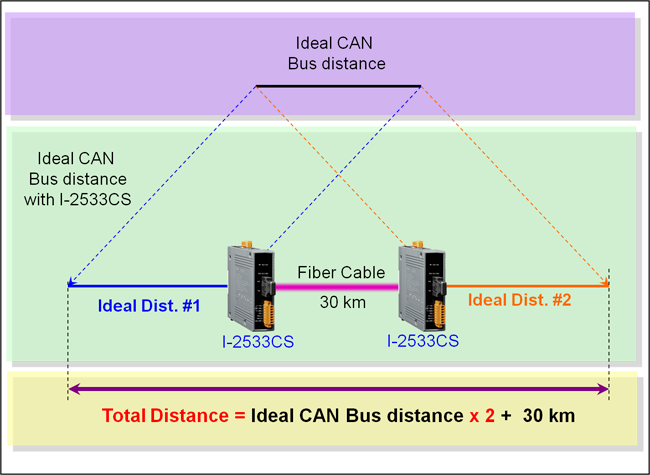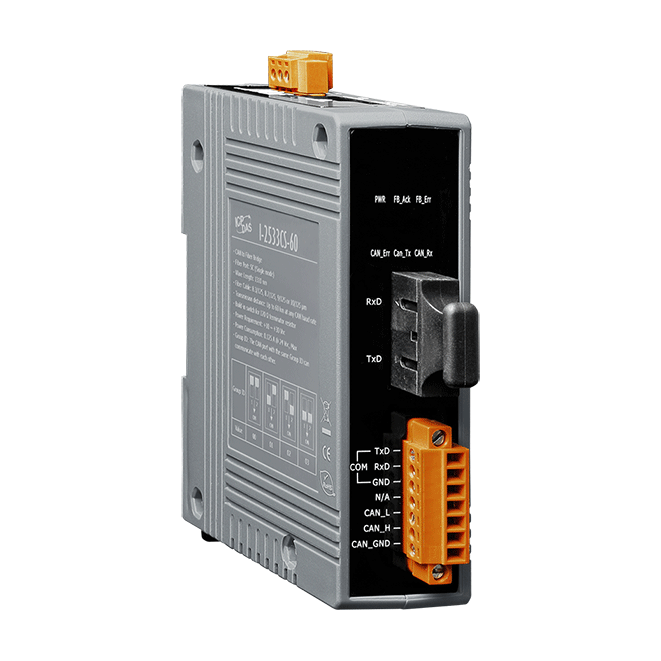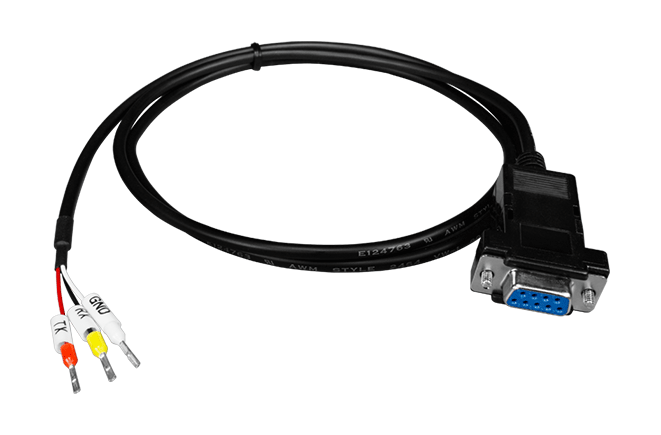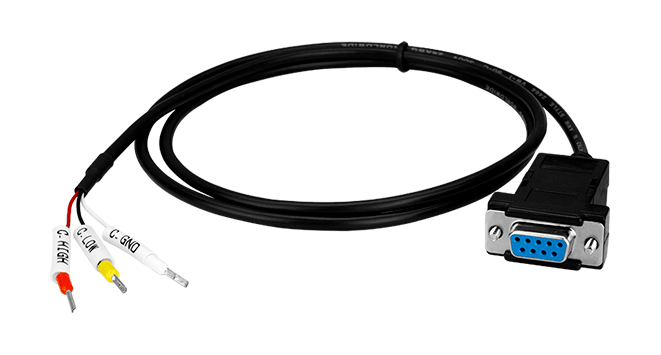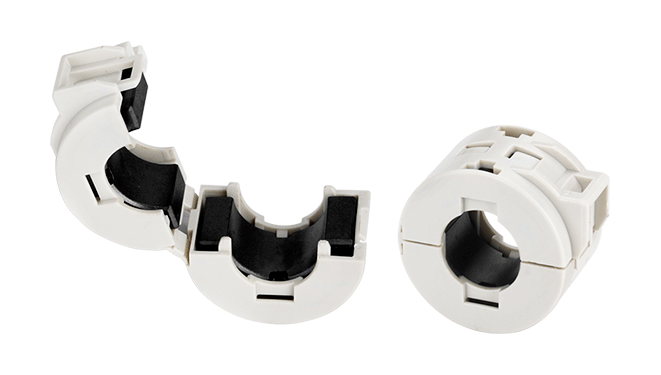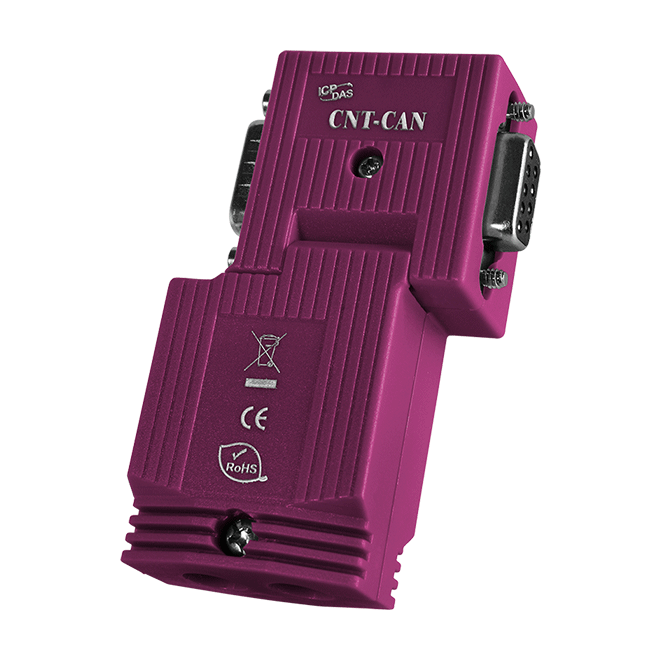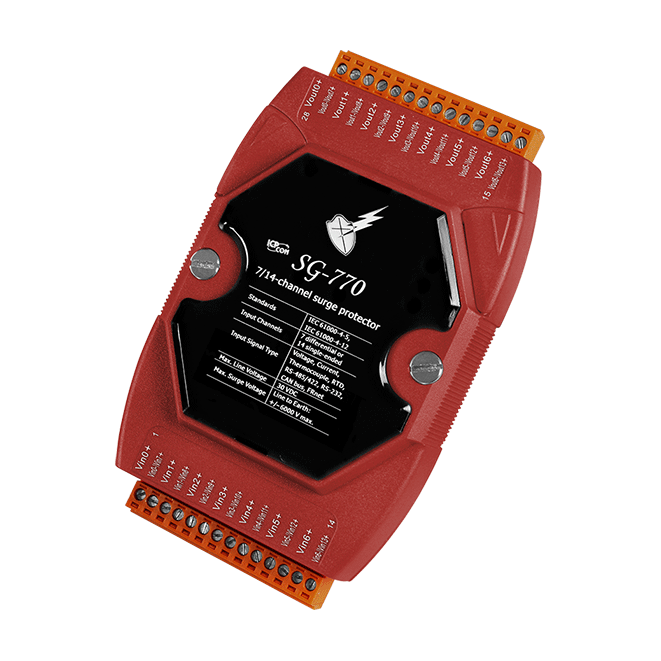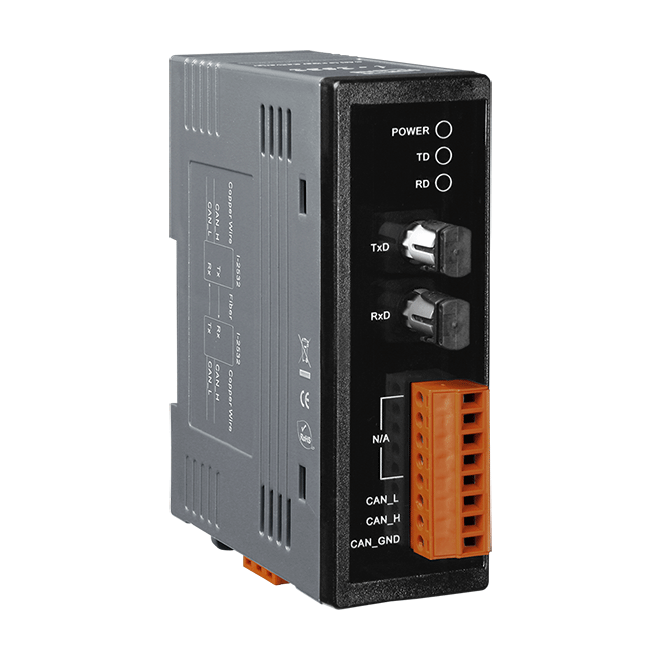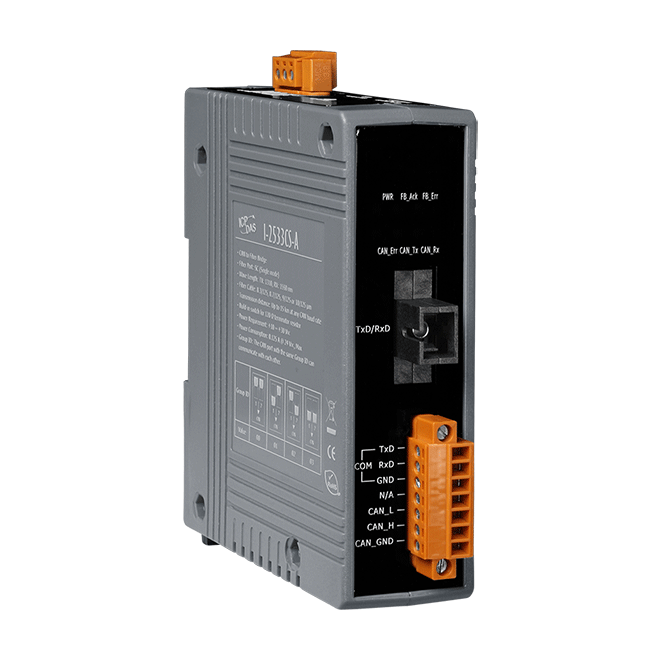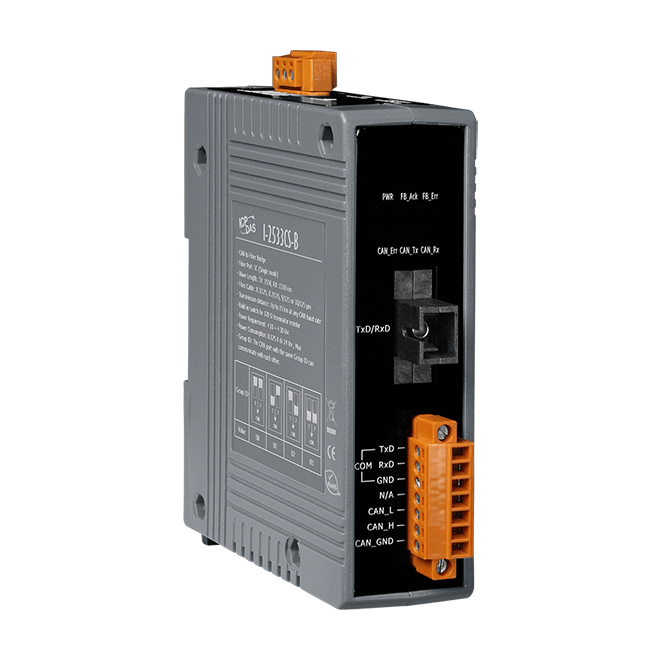I-2533CS-60
Introduction
The I-2533CS-60 is a local CAN bridge used to establish a connection between two CAN bus system via single mode fiber optic transmission medium. In order to solve the problem between CAN and fiber transmission medium, the I-2533CS-60 series is specially designed for converting the electrical CAN bus signal to fiber optic cables. I-2533CS-60 has three more important features. First, the transmission distance limitation of the CAN bus system will not affected due to the different CAN baud rate. It means that the total CAN bus working distance can be extended. Second, the bus error on one CAN network will not affect the operation of another CAN network. Finally, the two CAN network can communication with each other by using different CAN baud rate for highly flexibility.
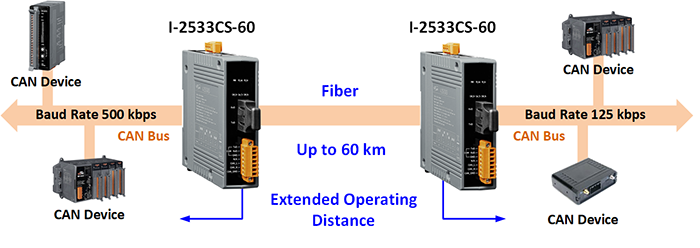
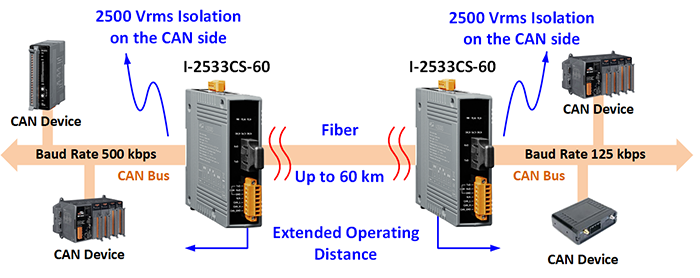
The I-2533CS-60 series is designed for single mode fiber, and allow to extern CAN bus to maximum 30 km. Besides, I-2533CS-60 provides the group function, which is the basic message router. Users can decide the CAN message flows between several CAN bus systems. I-2533CS-60 series also provides the utility tool for user-defined baud rate and filter configuration. By using this tool, it is allowed to have user-defined baud rate and CAN message filter. When users use the I-2533CS-60 series on two CAN network with different CAN baud rate, it may be useful to reduce the bus loading of the network which has low baud rate.
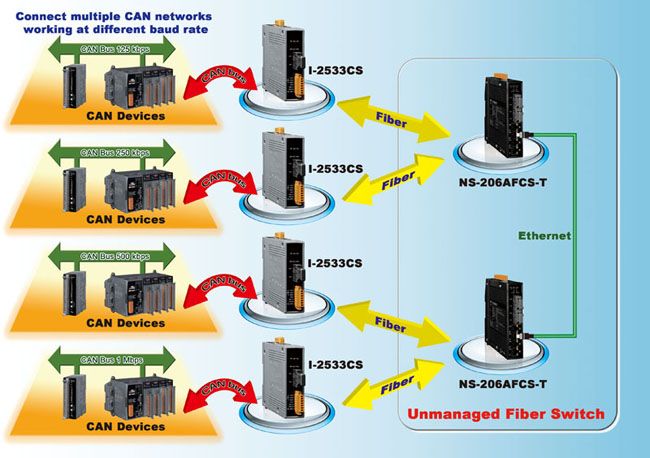
Applications
Ordering Information
| PRODUCT SERIES | DESCRIPTION | QNT. | INQUIRY |
|---|---|---|---|
Similar Products
| LED Indicators | |
|---|---|
| Status | 1 x Power 3 x CAN status 2 x Fiber status |
| COM Ports | |
|---|---|
| Ports | 1 x RS-232 (Utility Port) |
| Fiber | |
|---|---|
| Ports | Single-Mode; SC Duplex connector x 1; 100 Base-FX |
| Fiber Cable | 8.3/125, 8.7/125, 9/125 or 10/125 μm |
| Wavelength | 1310 nm |
| TX Output | -5 dBm Min. , 0 dBm Max. |
| Transmission Distance | 60 km (9/125 μm recommended) |
| RX Sensitivity | -35 dBm Max. |
| RX Overload | -5 dBm Max. |
| Budget | 30 dBm |
| Propagation Delay | 190 us (*Note1) |
| CAN | |
|---|---|
| Ports | 1 |
| Baud Rate | 10 k ~ 1 M bps |
| Isolation | 500 Vrms on the CAN side |
| Terminal Resistor | Switch for 120Ω terminal resistor |
| Specification | ISO 11898-2, CAN 2.0A and CAN 2.0B |
| Filter | Yes |
| Power | |
|---|---|
| Input Range | +10 VDC ~ +30 VDC |
| Consumption | 3 W |
| Mechanical | |
|---|---|
| Casing | Plastic |
| Dimensions (mm) | 33 x 126 x 101 (W x L x H) |
| Installation | DIN-Rail |
| Environment | |
|---|---|
| Operating Temperature | -25 ~ +75 °C |
| Storage Temperature | -30 ~ +80 °C |
| Humidity | 10 ~ 90% RH, Non-condensing |
Specification Memo

| CAN Baud rate [bit/sec | Ideal Fiber Length [km] |
|---|---|
| 1M | 30 |
| 800K | 30 |
| 500K | 30 |
| 250K | 30 |
| 125K | 30 |
| 50K | 30 |
| 20K | 30 |
| 10K | 30 |
